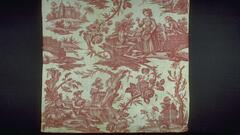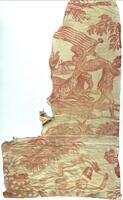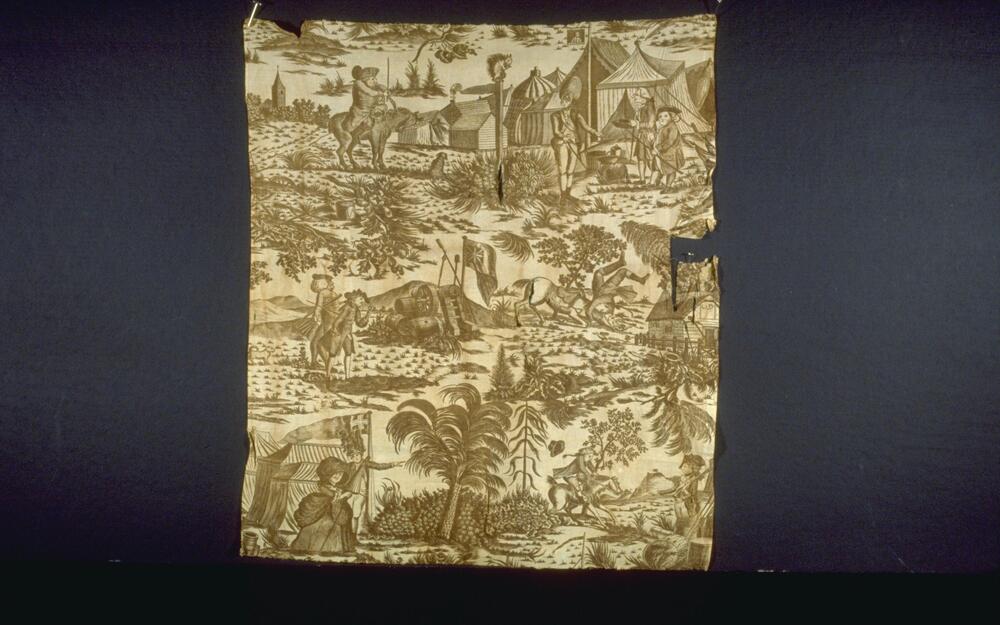Deep Dive: Life in the Army
Explore the 18th century satirical "Life in the Army" printed cloth
This printed cloth designed by eighteenth century British caricature artist Henry Bunbury follows the “Toiles de Jouy” decorative structure while using the medium for satirical political commentary. This piece was unnamed but often referred to as “Life in the Army” and mocks the British military. The tropical flora and landscapes indicate the Atlantic colonies. Typical of Bunbury’s style, “Life in the Army” mocks the incompetence and presentation of elites from their inability to properly ride horses or treating the military campaign as a social occasion. Ironically, Bunbury was a member the elite class but his satire was not interpreted as offensive by his contemporaries.
Under colonial law, British colonies were not allowed to have local cloth printing manufacture and relied on the British marketplace for all consumer products. The growing demand for luxury consumer goods in colonies lead British tradesman to actively create and target projects to the colonial populations. This satirical take on the British military abroad may have been designed with an American and Atlantic colonies market place in mind. In the earlier prints of this cloth the drum read “G III R” suggesting the military follies of George III that would have appealed directly the colonies and the newly independent United States.
Cotton cloth production and printing developed in India and was brought to the Europe through early explorers and colonizers. Indian cotton woodblock print cloth’s increasing popularity led to a ban on its import in England to protect the countries wool industry. In the mid eighteenth century England lifted the import ban leading to a flurry of new printing techniques and a race to develop efficient mass production print. Copperplate printing came into fashion in the 1750s developed by Francis Nixon and Theophlius Thompson in Dramcondra, Ireland. The technique quickly spread to London before J.P. Oberkampf took the technique to France creating the distinctive and prolific Rococo style typical of “Toiles de Jouy” prints. Copperplate prints were created through etching thirty-six by thirty-six copper squares then running the cloth and plate through a press to transfer the image. Due to the level of detail and minimal color pallet, copperplate printed cloth typically depicted scenic or narrative designs. Copperplate production allowed for more detailed and larger scale printing but monochromatic made it ideal for bed furnishing and drapes. Since the cloth was printed through copper etching compared to woven or wood block printing, designs were quickly mass produced making cloth a vehicle for political messages as well as fashionable designs.
Part of 1 Learning Collection
<p>Explore the popular and image rich piece of 18th...
Created For
K-12 EducatorK-12 Student
Museum Visitor
UMMA Docent
UMMA Staff
University Faculty
University Student
Rate this Resource
AVG: 0 | Ratings: 0
& Author Notes
Creative Commons by-nc-ndLast Updated
July 13, 2018 1:32 p.m.Report
Reporting Policy





